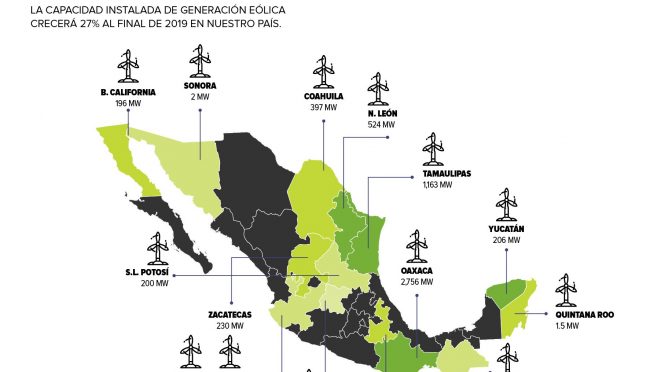Green energies are gaining ground worldwide, especially wind and solar, with a high rate of expansion and technological evolution. This accelerated growth has been occurring particularly in Europe, China, India and recently in the United States, the latter with new policies to quickly access public funds, such is the case of the Inflation Reduction Act, which aims to increase and boost the market for renewables with a bag of $370 billion dollars for the Energy Security and Climate Change segment.
In Latin America there is broad interest in meeting the Sustainable Development Goal SDG 7 (“guarantee access to affordable, reliable, sustainable and modern energy for all”) and cover their energy needs with increasingly cheaper renewable resources; the most advanced in this energy transition have been Uruguay, Costa Rica, Colombia, Brazil, Chile and Mexico. Others, like Puerto Rico, want to stop depending on imported hydrocarbons for electricity generation, their goal being to have 100% of their energy supplied by renewables by 2050.
In Mexico, at the end of 2021, clean renewable energies represented 24.9% of total generation, that is: 81,825.43 of 328,597.98 GWh per year, according to the latest SENER report (PRODESEN 2022-2036), wind power achieved 6.4% (21,074.87 MWh).
The National Renewable Energy Laboratory (NREL) of the United States issued a report in April 2022 where it evaluated the potential of clean energy in Mexico and the ways of rapid implementation of the technologies to reach the goal of generation with renewable resources of 35% per year. 2024, 37.7% by 2030 and 50% by 2050, established in the Transition Strategy to Promote the Use of Cleaner Technologies and Fuels of the Energy Transition Law, and the reduction of greenhouse gas emissions to 35% by 2030 announced at COP 2027.
According to this report, the national wind power potential is 3,670 GW, however, the installed capacity as of 2021 was 7,154 MW.
The first wind farm installed and operating in Mexico was “La Venta”, located on the Isthmus of Tehuantepec, Oaxaca, which began operations by CFE in 1994 with an installed capacity of 1,575 MW (7 wind turbines of 225 kW each) 1, being the first prototype project of its kind in Latin America and with which the potential of the isthmus region was verified.
On February 8 of this year, President Andrés Manuel López Obrador announced the possible installation of 4 wind farms that will be managed by CFE and financed by US banks.
It is important to highlight that these projects in Oaxaca have not been exempt from social problems, which is why important management work has had to be done, since there are voices for and against among the community members.
In addition to the above, the Spanish Siemens Gamesa canceled the land rental contracts to 500 peasants who own two thousand hectares where they were going to invest 600 million dollars for the construction of the 150 MW capacity El Sauzal wind farm.
Regarding the state of Baja California Sur, in October 2022 and after 2 years of construction, the US company Eurus Energy America Corporation, whose majority owner is the company Toyota Tsusho Corporation, started the commercial operation of the first wind farm in Baja California South, called Coromuel 2, with a capacity of 50 MW and which integrates a 10 MW battery system that gives reliability to the electrical network, controlled in turn by the Wärtsilä GEMS intelligent management system that allows the current to be adjusted accordingly. to the intermittency of the wind, eliminating the adverse effects on the transmission lines.
In Tamaulipas, with a wind potential of 22,558 MW, there are only 2.3 MW in operation; In addition, the state Energy Commission suspended at least 30 wind projects for lack of transmission lines from the CFE3; therefore, to boost generation, SENER announced an investment of approximately 8 billion pesos aimed at developing the necessary infrastructure.
The recently announced Sonora plan is also contemplating integrating wind generation, however general data is not yet available, clarifying that photovoltaic generation is the one that will dominate with the development of five photovoltaic plants.
Given this information presented, it is clear that:
- Mexico has a great potential for electricity generation, which must be used to cover the new demand of the population and industry that has objectives of reducing greenhouse gas emissions, obtaining international financing with green bonds, etc.
- An unbeatable opportunity for companies to attract resources opens up in Mexico to support the plans of the United States raised in the IRA, taking advantage of the clauses of the TMEC and the recent Nearshoring;
- There must be a rapprochement in the field of research and development applying technology transfer criteria;
- Mexico would be able to reach agreements for the export of electrical energy under clean energy criteria through the already established export nodes and install more if necessary;
- An opportunity to create jobs and revitalize local economies;
- Exploit new capacities for the benefit of the Mexican electricity industry;
References:
- Wind energy in Mexico, a social perspective on land value, Commission for Dialogue with the Indigenous Peoples of Mexico; 2. https://www.eolicacoromuel.com/espanol;
- Reforma Newspaper: Turn off Tamaulipas in 2023 investment in wind farms, December 08, 2022, digital version.
Ing. Juan Escobedo Vielma
Opinión de Colegio de Ingenieros Civiles de México


